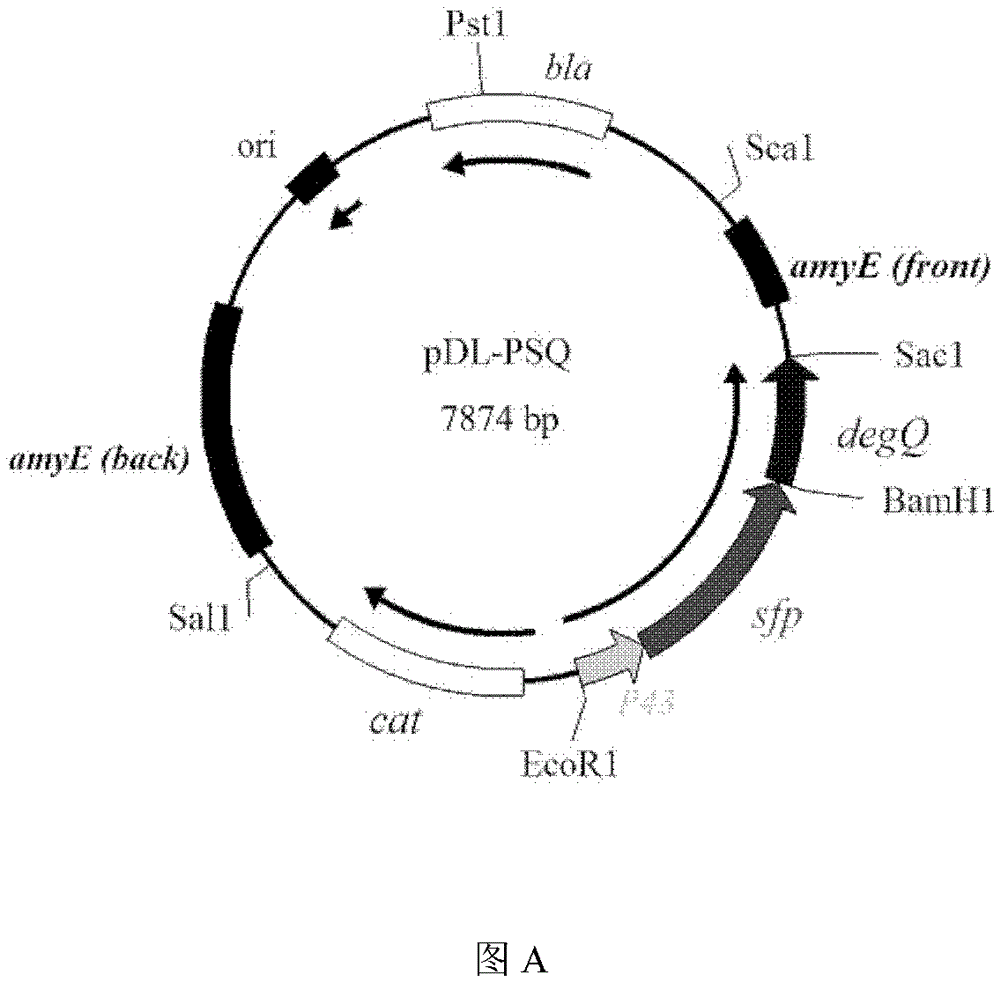Surfactin and Plipastatin co-production bacillus subtilis strain and method for constructing same
A Bacillus subtilis and construction method technology, applied in the field of recombinant plasmid pDL-PSQ, can solve the problems of inability to produce Surfactin and Plipastatin, etc., and achieve the effect of high safety
- Summary
- Abstract
- Description
- Claims
- Application Information
AI Technical Summary
Problems solved by technology
Method used
Image
Examples
Embodiment 1
[0045] 1. Materials and methods
[0046] 1.1 Strains and plasmids
[0047] Bacillus subtilis B.subtilisfmbJ (CGMCCNO.0943), Escherichia coli Escherichiacoli DH5α cloning host (purchased from Novizan Biological Company), B.subtilispB2 and Bacillus subtilis integration plasmid pDL (YuanandWong, RegulationofgroEexpressioninBacillussubtilis:theinvolvementofthesigmaA-likepromoterandtherolesofttheinvertedrep9seinvertedrep9) ) were preserved by the Enzyme Engineering Laboratory of Nanjing Agricultural University; EscherichiacoliT-A cloning vector pMD19-T (purchased from TaKaRa Company). Indicator strains: peach soft rot pathogen Rhizopus stolonifer (AS3.2336), Micrococcus luteus (CMCC28001), purchased from the Culture Collection Center of the Institute of Microbiology, Chinese Academy of Sciences.
[0048] 1.2 Medium
[0049] LB medium: peptone 10.0g, yeast extract 5.0g, NaCl 10.0g, distilled water 1000mL, pH7.0~7.2;
[0050] 10×Tbaase: (NH 4 ) 2 SO 4 20.0g, K 2 HPO 4 140.0g,...
PUM
 Login to View More
Login to View More Abstract
Description
Claims
Application Information
 Login to View More
Login to View More - R&D
- Intellectual Property
- Life Sciences
- Materials
- Tech Scout
- Unparalleled Data Quality
- Higher Quality Content
- 60% Fewer Hallucinations
Browse by: Latest US Patents, China's latest patents, Technical Efficacy Thesaurus, Application Domain, Technology Topic, Popular Technical Reports.
© 2025 PatSnap. All rights reserved.Legal|Privacy policy|Modern Slavery Act Transparency Statement|Sitemap|About US| Contact US: help@patsnap.com



